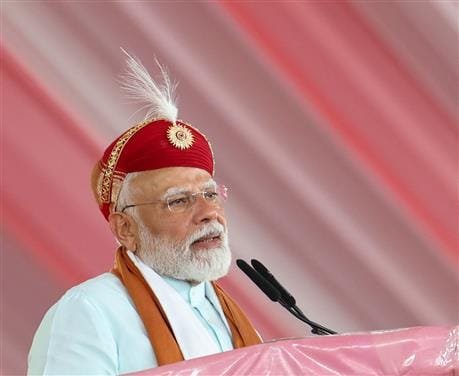First Mile Connectivity strategy planned for rail network
Sixty-nine projects are to be implemented by FY 2027-28 under the Ministry of Coal’s planned 102 first mile connectivity (FMC) projects, costing Rs.30,000 crore for building a capacity of 1,040 MTPA.
Thirty-nine projects (37-CIL & 2-SCCL) of 386 MTPA capacity have been commissioned, have been commissioned, the Ministry said in a yearend review on 27 Dec.
Keeping in view the increase in coal evacuation in future, Ministry is also working on the development of National Coal Logistic Plan including First Mile Connectivity through railway sidings near coal mines and strengthening of Rail Network in Coalfields https://thecoalhub.com/.
The Ministry has formulated a strategy to develop an integrated approach for eliminating road transportation of coal in mines and has taken steps to upgrade the mechanized coal transportation and loading system under ‘First Mile Connectivity’ projects https://www.conexpoconagg.com/.
Coal Handling Plants (CHPs) and SILOs with Rapid Loading Systems will have benefits like crushing, sizing of coal and speedy computer aided loading https://www.globaltenders.com/.
With reduced manual intervention, precise pre-weighed quantity and better quality of coal can be loaded. Improved loading time will bring down the wagon idling increasing their availability. Easing the load on road networks promotes cleaner environment and savings on diesel. It will be an all-round win-win situation for the company, railways and the consumers https://ted.europa.eu/en/.
The Ministry, in view of cleaner environment in coal transportation has given momentum in rail evacuation and also initiating news efforts to gradually move away from road movement of coal in country http://coal.nic.in.
It has mapped more than 100 layers and mapped on portal along with attributes and metadata. These layers will speed up the process of Planning by consideration of all requirements related to Ministries during the planning and execution stage in projects https://sbi.com.in/.
The Ministry has set a goal to produce 1.3 billion tonne of domestic coal by FY 2027 and 1.5 3 billion tonne by FY 2030 to advance Atma-Nirbhar Bharat and increase India’s energy security by substituting imported coal with locally mined coal https://www.nseindia.com/.
In view of projected coal demand, the existing evacuation infrastructure may not be adequate to optimally evacuate the projected coal demand and can pose a challenge https://www.bseindia.com/.
It was imperative to re-evaluate the existing logistics infrastructure available across all transportation modes of coal evacuation in an integrated manner and to plan for sustainable development of future infrastructure that leverages the strengths of different modes leading to optimized total logistics cost of coal movement at the National Level.
Accordingly, an extensive exercise has been undertaken for Origin-Destination study for freight movement of coal, based on the scientific data, congestion analysis was carried out and identification of railway infrastructural gaps for all the blocks currently in operation and also proposed to be operationalized for the peak production requirement of the country.
This exercise has been undertaken in close consultation with stakeholders Ministry of Steel, Ministry of Power, Ministry of Railways, Ministry of Road and Transport and Highways, Ministry of ports Shipping and Waterways, Niti Aayog and DPIIT.
Based on this extensive exercise, Ministries of Railways and Coal have jointly identified 38 critical infrastructure gap projects. Such projects have been incorporated in the Coal Logistics Action Plan.
Logistics Policy and Plan with a vision to develop technologically enabled, integrated, cost effective, resilient, sustainable and trusted logistics ecosystem for coal evacuation. This strategic framework aims to propel accelerated demand and supply of coal sector in FY2030.
Coal Logistics Policy and Integrated Coal Action Plan was launched on 29 Feb 2024.
Thirty-seven critical gap railway projects have been identified.
The Ministry of Railways is procuring wagons. It requires 100,000 wagons to meet the coal evacuation requirement keeping in view of 86% rail evacuation of coal by FY 2030.
Costal Movement of Coal: With a view to enhance the costal movement of coal from current level of 40 MT per annum to about 120 MT per annum, critical railway infrastructure gaps have been identified.
Included in the Railway’s plans is the Rail-Over-Rail at Cuttack and 4-lining of Cuttack-Paradip railway line.
Port Authorities of Paradip, Dhamra and Gangavaram port are also taking measures to enhance their coal handling capabilities.
Development of Inland Waterways:
National Water Way–5 in Brahmani and Mahanadi rivers have been identified for development for coal transportation.
Inland Waterways Authority of India, Government of Odisha and Coal India Ltd are forming a Special Purpose Vehicle (SPV) which will develop waterway for transportation of coal from Talcher Coal Fields to Paradip port.
Smart Coal Logistics Dashboard has been planned by the Coal Ministry. It will be a centralized platform for real-time reporting and analytics on coal production, demand and logistics. Fiinews.com










